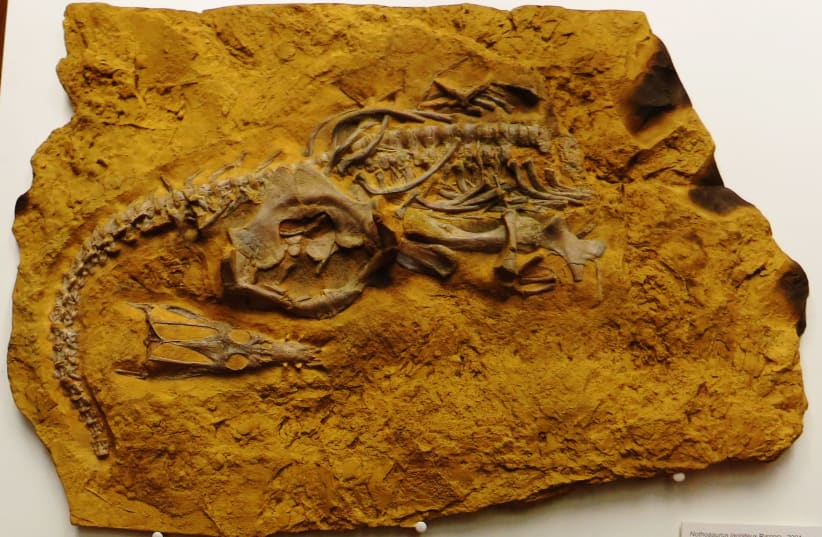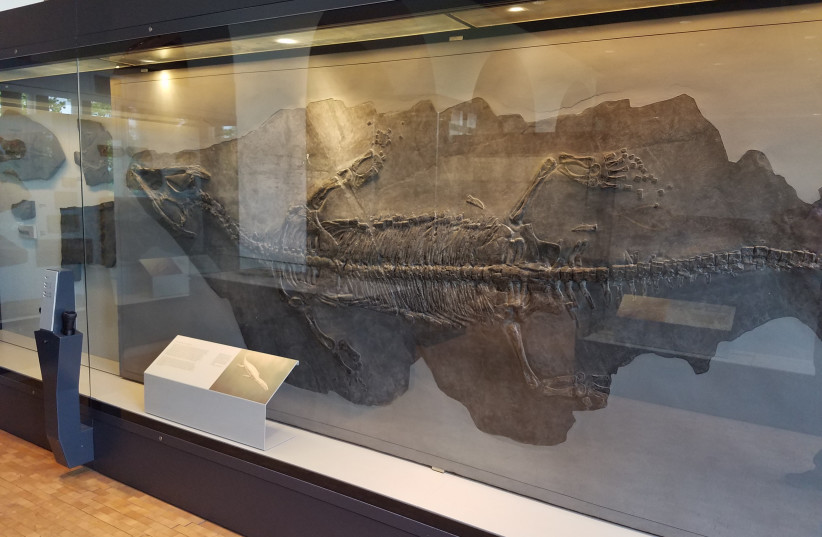The oldest fossil vertebra of a polar sea dinosaur dating back 246 million years was discovered on South Island in New Zealand, LiveScience.com reported last week.
The ancient vertebra is the oldest of its type to be found in the Southern Hemisphere. The discovery contradicts current theories and provides evidence that suggests early migration into the oceans was not unique to the island Spitsbergen in northern Norway.
Before dinosaurs dominated the land, reptiles lived in the seas for millions of years. Among them, sauropterygians were the most diverse and long-surviving group of reptile types, with an evolutionary span of over 180 million years.
This group is most commonly associated with the long-necked plesiosaurs, “which resembled the popular image of the Loch Ness Monster,” wrote Dr Benjamin Kear, lead author at The Museum of Evolution at Uppsala University on the university’s website
Interestingly, the fossil itself is not new and was attributed to the giant sea monster called nothosaurus. This giant marine reptile lived during the Triassic Period (approximately 251-200 million years ago,) and roamed the super-ocean spanning from prehistoric northern Europe to southern Asia, according to the Britannica.
The nothosaurs had a slender body with elongated neck, tail, and limbs and would swim by rolling its body creating a flowing motion similar to a ripple. It evolved from terrestrial reptiles distantly related to lizards and snakes, just as many other sauropterygians did.
The fossil was discovered in 1978, however, only recent analyses revealed the true significance of the find. “The nothosaurus found in New Zealand is over 40 million years older than the previously oldest known sauropterygian fossils from the Southern Hemisphere,” stated Krear.
Ancient habits and evolution of nothosaurus
“We show that these ancient sea reptiles lived in a shallow coastal environment teeming with marine creatures within what was then the southern polar circle,” he further added.
According to his statement, the oldest nothosaurus fossils - dating back approximately 248 million years - were discovered along an ancient northern region spanning from the northeastern to northwestern Panthalassa Super-Ocean, mostly found in Europe, southwestern China, and the Middle East.
Until recently, there were ongoing disagreements concerning the living habits of the ancient polar sea monster revolving around aspects of their migration into the sea.
“Using a time-calibrated evolutionary model of sauropterygian global distributions, we show that nothosaurus originated near the equator,” Kear stated. He further explained that the nothosaurus “ rapidly spread both northwards and southwards … after the cataclysmic mass extinction that marked the beginning of the Age of Dinosaurs.”
As Kear stated on Uppsala University’s website, “Although represented by just a single vertebra that was excavated from a boulder in a stream bed at the foot of Mount Harper on the South Island of New Zealand – this discovery has shed new light on the previously unknown record of early sea reptiles from the Southern Hemisphere.”

